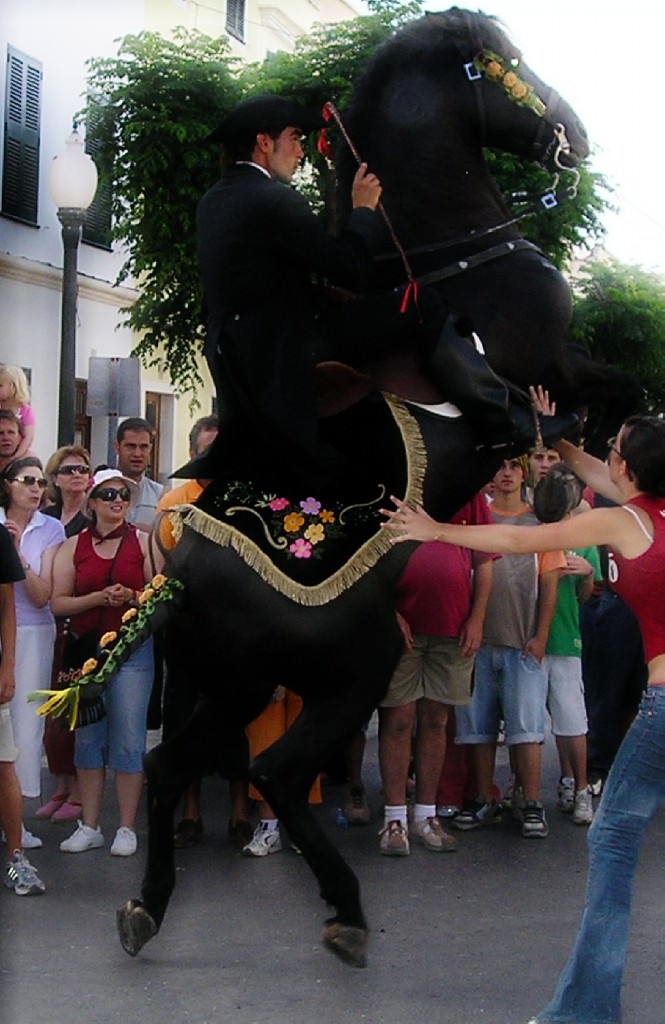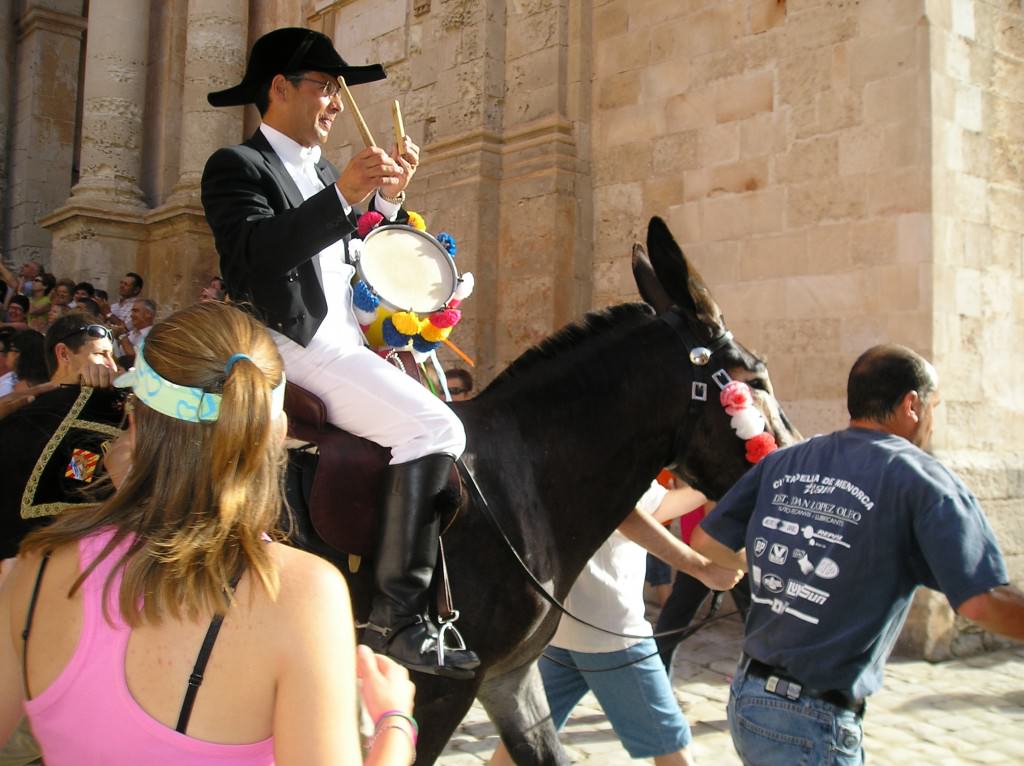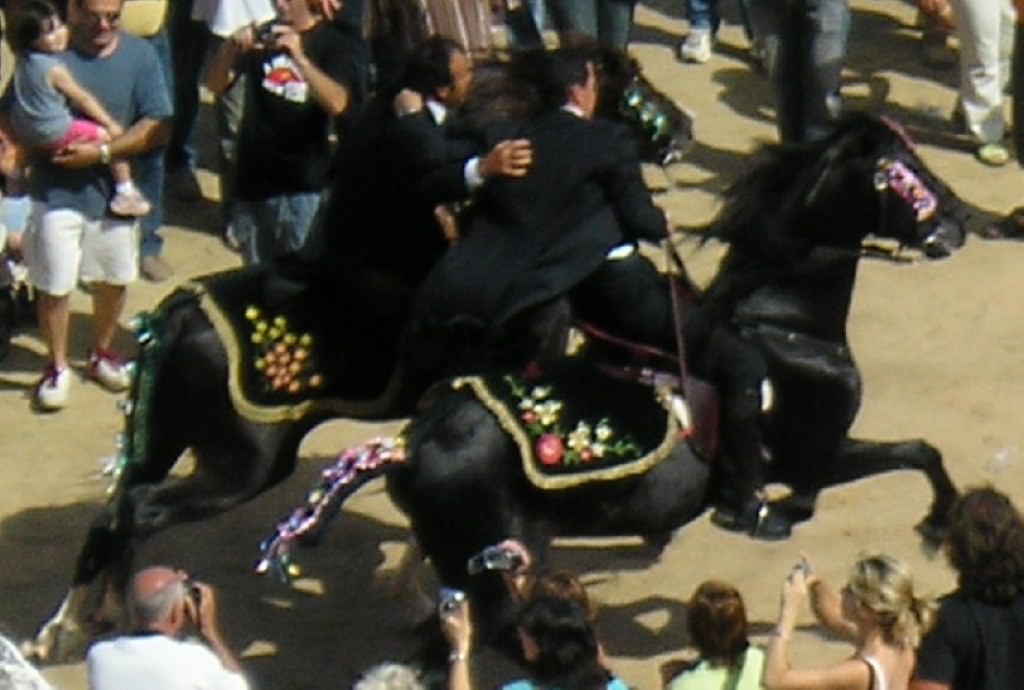When I traveled to Menorca, Spain I hadn’t realized my visit would coincide with the Balearic Island’s annual parade of world famous horses, the Menorcan. On June 24th and 25th thousands of visitors from across Europe converge on Ciutadella’s main square to wait for a drummer on a donkey to lead 150 elegant, ebony horses through the city as they showcase the doma menorquina riding style specifically taught to the Menorcan breed. Representing the island’s nobility, the horsemen and women are dressed in traditional black velvet, and for the rest of the day they’ll guide these beautiful horses in a reenactment of a religious pilgrimage dating back to the fourteenth century.
Chosen at the age of three or four, the stallions are trained to execute four specific gaits; the Spanish walk, half pass, flying changes and piaffe, and bot, or walking courbette. By the time they’re introduced to the crowds in Ciutadella they’ve mastered these steps precisely and can demonstrate them with only a slight movement of the reigns. However, it’s their signature move, the elevade, the people in the square have come to see.
Instigated by a simple touch on its shoulder, a Menorcan horse will rear up onto its hind legs to balance in a regal pose for several seconds. With mane flying and paws beating the air, it’s a demonstration of the iconic image of Spanish horsemanship. In folklore it’s considered good luck to initiate an elevade, a fact that encourages the crowd to approach these horses hundreds of times during the course of the festival.
On the second day the celebration culminates in a contest of horsemanship during three mock jousting events. With the typical fan participation seen in all Spanish festivals, the crowd moves to a small arena at the head of the city’s port where a triage tent and several ambulances are parked along the sidelines. If you’re not into danger, I found the best spot to watch the proceedings was in the street above the arena where you can look down at the spectacle without the worry of being trampled. And that’s no joke. During the first twenty minutes the stretcher bearers fought their way through the crowd six times to pick up a limp body.
When the horses arrive their riders take them on a ceremonial trot past a dais where the island’s dignitaries judge the horses’ grace and agility. Up and down the Menorcans go, like carousel horses, their heads bobbing above the crowd of people as they jump into their signature poses over and over and over again until the main event begins.
The first contest of skill is called the ensortilla. It features a lance held by the jouster who threads it through a small ring suspended from a pole as he rides his horse at full speed through the crowd. In the next event, the romper ses carote, the jouster attempts to break a hand-painted, wooden circular shield held by another jouster with his lance as they run towards each other from the opposite directions. The final and most dangerous jousting event is called the córrer abraçats, or “running embrace “, where two horses run side-by-side as their riders embrace. The challenge is in the synchronized movements of the horses as their handlers use only one hand on the reigns.
With the events concluded, the role of the Menorcan horse in the Festes de Sant Joan has ended and they’re returned to their stables with the love and admiration of the celebrating crowds. Representing centuries of pride, this breed has become a symbol of the island itself and their show of strength, precision, and grace has helped to shape the image of the Spanish equestrian tradition.
Going to Menorca? Here you’ll find hotels in Menorca that have been reviewed by travelers like yourselves.
Dena Weigel Bell holds a Bachelors of Fine Arts and has participated in several study abroad programs, exploring the cultural history of over thirty countries in Europe, the Middle East, and Asia. She continues to travel for pleasure, learning many new things on each adventure and writing about them at www.denaweigelbell.wordpress.com.





